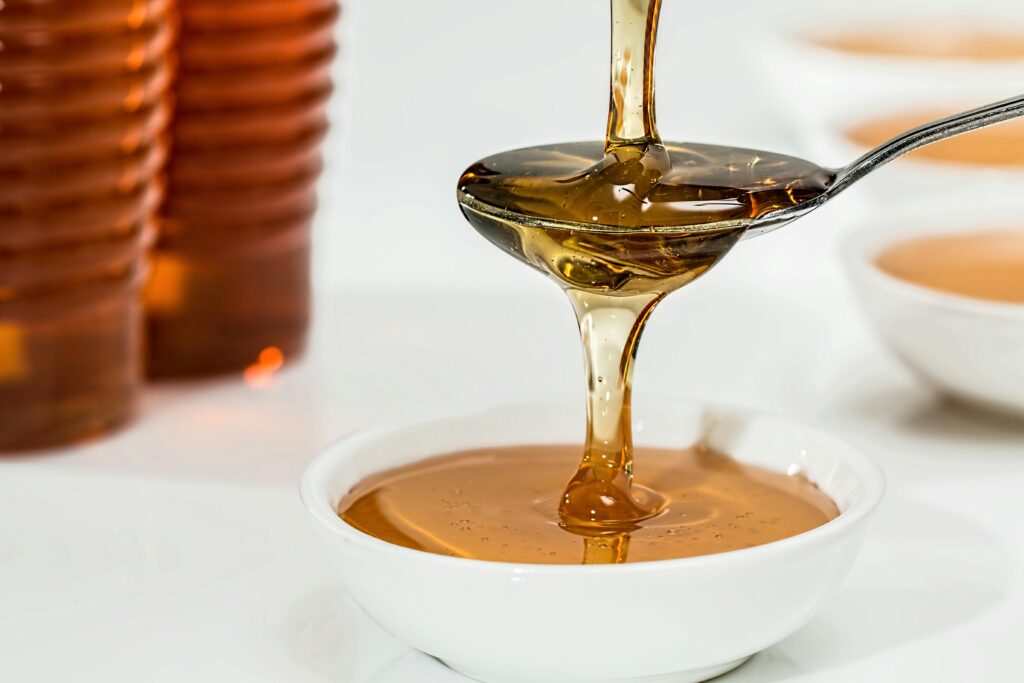
=
How to identify authentic honey involves understanding its natural composition, recognizing signs of adulteration, using analytical or home-based tests, and sourcing from trusted producers to ensure purity and botanical origin.
How to identify authentic honey might feel overwhelming with so many varieties and labels on the market. Ever wondered if the honey you’re buying is truly natural and unadulterated? Let’s explore practical ways to spot genuine honey and understand the science behind its authenticity.
Understanding what authentic honey means
Authentic honey is a natural product made by bees from the nectar of flowers, free from additives like sugar syrups or artificial sweeteners. It retains its original enzymes, antioxidants, and nutrients, and reflects the botanical and geographical origin of the nectar source.
To be considered authentic, honey must not be excessively heated, diluted, or chemically altered. Its purity is often verified through analytical methods that assess its sugar profile, mineral content, pollen spectrum, and bioactive compounds. These parameters help confirm whether the honey is truly from a specific floral source or region.
Why does authenticity matter?
Authentic honey offers full nutritional benefits, including antibacterial and antioxidant properties. Adulterated honey, on the other hand, may contain cheap sweeteners or be processed in ways that degrade its health value.
For consumers, authenticity ensures they’re getting the real deal—honey that supports sustainable beekeeping and delivers therapeutic benefits. For producers, maintaining authenticity protects brand reputation and supports fair pricing in the market.
Common adulteration practices to watch out for
Adulteration is a widespread issue in the honey industry. Some common practices include:
-
Mixing honey with sugar syrups, glucose, or corn syrup to increase volume.
-
Heating honey to delay crystallization, which destroys enzymes and nutrients.
-
Mislabeling honey from mixed or non-organic sources as “pure” or “organic.”
These tactics not only mislead consumers but also harm the credibility of genuine producers.
Scientific methods to verify honey authenticity
Researchers use several advanced techniques to assess honey purity and origin:
-
Melissopalynology: Analyzing pollen grains to determine floral source.
-
Chromatographic and spectroscopic methods: Identifying chemical markers and sugar profiles.
-
Elemental profiling: Measuring minerals like calcium, copper, and iron to trace geographical origin.
-
Chemometric analysis: Using statistical models to classify honey based on physicochemical and sensory data.
These methods are especially useful for producers and regulators, but they also inform consumers about what makes honey truly authentic.
Visual cues to recognize authentic honey
Even without lab tests, you can spot signs of authenticity:
-
Color: Varies from pale gold to dark amber depending on floral source. Rich, vibrant hues suggest purity.
-
Texture: Authentic honey is thick and may crystallize over time. Uniform crystals are a good sign.
-
Flow: Pure honey pours slowly in a thick stream, not like syrup or water.
-
Foam: Small bubbles may appear naturally, but excessive foam could indicate fermentation or overheating.
Simple home tests to check honey purity
While not foolproof, these tests offer quick insights:
-
Water test: Drop honey into water—pure honey sinks and doesn’t dissolve easily.
-
Thumb test: A drop of pure honey stays intact on your thumb; fake honey spreads.
-
Heat test: Pure honey caramelizes without bubbling; adulterated honey may foam.
-
Paper test: Drop honey on blotting paper—pure honey won’t soak in quickly.
For accurate results, lab testing remains the gold standard.
Reading labels and certifications carefully
When buying honey, check for:
-
Certifications: Look for labels like PGI (Protected Geographical Indication), USDA Organic, or EU Organic.
-
Ingredients: Ensure the label lists only “honey” with no additives.
-
Origin details: Authentic honey often includes floral and geographical origin.
Beware of vague terms like “natural” or “wildflower” without certification—they don’t guarantee purity.
Benefits of choosing authentic honey
-
Better taste and aroma: Reflects the unique floral source.
-
Health benefits: Rich in antioxidants, enzymes, and nutrients.
-
Environmental impact: Supports ethical beekeeping and biodiversity.
-
Economic value: Helps rural producers and promotes fair trade.
Where to find trustworthy sources for authentic honey
-
Local beekeepers: Direct purchases offer transparency.
-
Certified organic stores: Often carry verified products.
-
Online retailers: Look for detailed sourcing info and customer reviews.
-
CSA programs: Support local ecosystems and sustainable practices.
Understanding and choosing authentic honey
Knowing how to identify authentic honey helps you enjoy a product that’s both delicious and beneficial. By learning visual cues, trying simple tests, and checking certifications, you can avoid adulterated honey and support responsible producers.
Authentic honey offers more than sweetness—it’s a reflection of nature, care, and integrity. Make informed choices and savor the richness of real honey.
🐝 FAQ: Identifying Authentic Honey
1. What does “authentic honey” mean? Authentic honey is unadulterated honey produced by bees from natural floral sources. It contains no added sugars, syrups, or artificial substances and retains its original enzymes, antioxidants, and nutrients. Its composition reflects its botanical and geographical origin.
2. How can I tell if honey has been adulterated? Adulterated honey may contain added sweeteners like glucose or corn syrup, show delayed crystallization, or lack natural aroma and flavor. Lab tests such as chromatography, melissopalynology (pollen analysis), and elemental profiling are used to detect adulteration.
3. What are the most reliable methods to verify honey’s botanical origin? Botanical origin is typically verified through:
-
Melissopalynology (pollen analysis)
-
Chromatographic techniques (sugar and compound profiling)
-
Spectroscopic and elemental analysis
-
Chemometric modeling using statistical classification tools
4. Can I test honey authenticity at home? Yes, simple home tests like the water test (pure honey settles at the bottom), thumb test (pure honey stays intact), and heat test (pure honey caramelizes without foaming) can offer clues. However, these are not definitive—lab testing is more accurate.
5. Why is botanical origin important in honey labeling? Botanical origin affects honey’s flavor, color, nutritional profile, and market value. Accurate labeling helps consumers choose honey based on taste preferences and health benefits, and supports producers who follow ethical and sustainable practices.
6. What certifications or labels should I look for when buying authentic honey? Look for certifications like USDA Organic, EU Organic, or Protected Geographical Indication (PGI). These labels indicate compliance with strict standards for purity, origin, and production practices.


